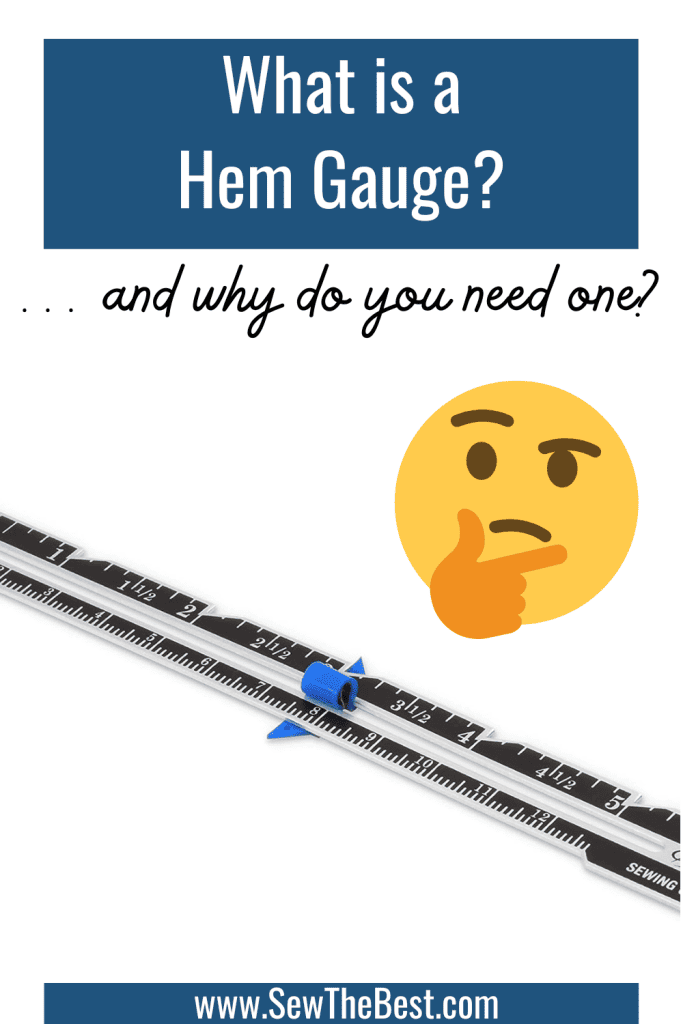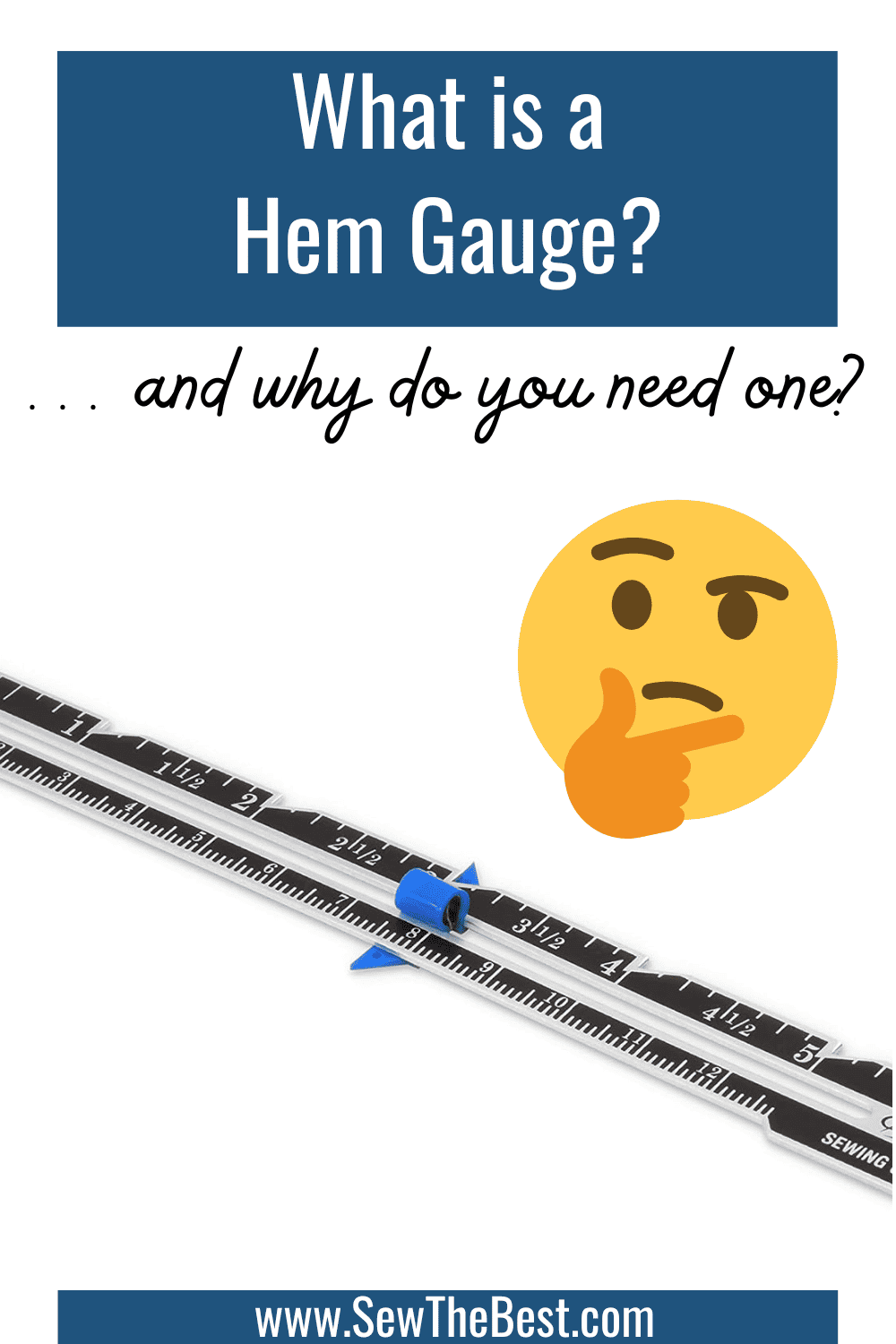If you’ve ever wondered how tailors make those perfectly even and neatly finished hems on your clothes or sewing projects, then you’re in the right place. In this article, we will explore the world of hems and introduce you to the indispensable tool known as the hem gauge. Whether you are a seasoned seamstress or just starting your sewing journey, understanding hems and how to use a hem gauge will undoubtedly elevate the quality of your creations. So, let’s dive in and unravel the mystery behind this essential sewing tool.
Before we talk about the hem gauge, let’s be sure to define what a hem is. In the world of sewing, a hem is the finished edge of a fabric or garment, created by folding and stitching to prevent fraying and provide a polished look. Even hems are essential as they ensure proper draping, add durability, and contribute to a garment’s balance and symmetry. Mastering hemming techniques leads to a professional finish, elevating your sewing skills. Now, let’s explore the hem gauge and its significance in achieving impeccable hems for your sewing projects.

If you’re in a hurry (or just curious!) –
✅ Check deals on our favorite Hem Gauges


What is a Hem Gauge?
A hem gauge is a remarkable tool that every seamstress should have in their sewing arsenal. Essentially, it is a small, ruler-like device made of metal or plastic, featuring various measurements along its length. The primary purpose of a hem gauge is to help you achieve precise and consistent hems throughout your sewing projects. Normally, a hem gauge consists of a long, straight edge with clear and easy-to-read markings in both inches and centimeters. Some models may also include additional features, such as a sliding marker or adjustable guide, allowing you to set the desired hem width accurately. This flexibility is particularly useful when working with fabrics of varying thicknesses or when following specific patterns with unique hem measurements.
Using a hem gauge offers several benefits, starting with having uniform and straight hems, resulting in a professional finish. It eliminates guesswork, reducing errors and fabric wastage, ultimately saving time and costs. Moreover, the hem gauge provides creative freedom, allowing experimentation with different hem widths, empowering sewers to customize garment designs and home decor projects effortlessly. In conclusion, the hem gauge is an indispensable tool that simplifies the hemming process, elevates sewing quality, and expands creative possibilities for all sewing enthusiasts.
How to Use a Hem Gauge
Using a hem gauge is a straightforward process that can greatly enhance your sewing skills. Follow these simple steps to make the most of this indispensable tool:
- Measure and Mark: Start by laying your fabric on a flat surface and determine the desired hem width. Use the clear markings on the hem gauge to measure and mark the appropriate distance from the raw edge of the fabric.
- Fold and Press: Once you’ve marked the hem width, carefully fold the fabric along the marked line, ensuring that the raw edge is tucked inside. Press the fold with an iron to create a crisp and well-defined crease.
- Align and Measure: Lay the hem gauge on the folded edge of the fabric, aligning the guide with the folded crease. Check that the measurement on the hem gauge matches your intended hem width.
- For a double rolled hem –
- Mark the Hem Again: Using a fabric marker or chalk, mark the fabric along the top edge of the hem gauge, indicating the point where you will fold the fabric to create the final hem.
- Fold and Press Again: Fold the fabric along the marked line and press it with the iron to secure the hem. Ensure that the folded edge is neat and even.
- Stitch the Hem: Finally, sew along the folded edge to secure the hem in place. You can use a straight stitch, a blind hem stitch, or any other suitable stitch for the fabric and design.
With these simple steps, you can effortlessly achieve precise and consistent hems using a hem gauge, making your sewing projects look polished and professional.
FAQ
Can I use a regular ruler instead of a hem gauge for measuring hems?
While you can use a regular ruler for basic measurements, a hem gauge is specifically designed for hemming tasks. It has clear markings, an adjustable guide, and it’s ease of use make it superior for achieving precise and even hems, which might be challenging with a standard ruler.
How do I choose the right hem gauge for my sewing projects?
Hem gauges come in various materials and sizes. When choosing one, consider the range of hem widths you need, durability, and your personal preferences. Look for a sturdy and easy-to-read hem gauge that suits your sewing needs.
What are some common uses of a hem gauge besides creating hems?
Although a hem gauge is primarily used for hems, it can also be handy for other sewing tasks. It can help measure seam allowances, fold and press accurate creases, and serve as a general measuring tool in various sewing and crafting projects.
Can a hem gauge be used for both metric and imperial measurements?
Yes, many hem gauges come with markings in both inches and centimeters, allowing you to work with either metric or imperial measurements, depending on your preference or the pattern specifications.
Is a hem gauge suitable for beginners in sewing?
Absolutely! A hem gauge is a user-friendly tool, making it suitable for beginners and experienced sewers alike. It simplifies the hemming process and helps beginners achieve professional-looking results from the start.
Can I create different types of hems using a hem gauge?
Yes, a hem gauge enables you to create various types of hems, such as narrow hems, wide hems, double-fold hems, and rolled hems. Its adjustability and precise measurements allow for versatility in your sewing projects.
How often should I use a hem gauge in my sewing projects?
You can use a hem gauge in virtually every sewing project that involves hemming. Whether it’s clothing, accessories, home decor, or quilting, a hem gauge ensures your hems are consistent and professionally finished.
Can I use a hem gauge for non-sewing projects as well?
Absolutely! While primarily designed for sewing, a hem gauge can be handy in other crafting projects that require precise measurements, straight edges, or consistent folds.
Can a hem gauge help me fix uneven hems on my old garments?
Yes, a hem gauge can be beneficial for fixing uneven hems on existing garments. By measuring and marking the desired hem width, you can even out the hems and resew them for a polished look.
Summary
In conclusion, mastering the art of hems and the indispensable role of a hem gauge in sewing can significantly elevate the quality and appearance of your projects. Hems, the finished edges of fabrics, provide durability and a polished look to garments and household items. Achieving even hems ensures a balanced design, prevents fraying, and adds a professional touch to your creations.
The hem gauge, a simple yet powerful tool, simplifies the hemming process by providing clear markings and an adjustable guide, eliminating guesswork and saving time. Whether you’re a beginner or an experienced sewer, incorporating a hem gauge in your toolkit empowers you to achieve precise and consistent hems with ease. Embrace the versatility of the hem gauge, using it not only for hems but also for seam allowances and other crafting projects. Let the hem gauge be your trusted companion, making each stitch a testament to your craftsmanship, and infuse your sewing projects with confidence and pride. Happy sewing!
Related Posts:
- Looking for more great beginner sewer tools? Check out the best tools for beginner sewers
- Ever wonder what a walking foot is? Check out our post, What is a walking foot?
